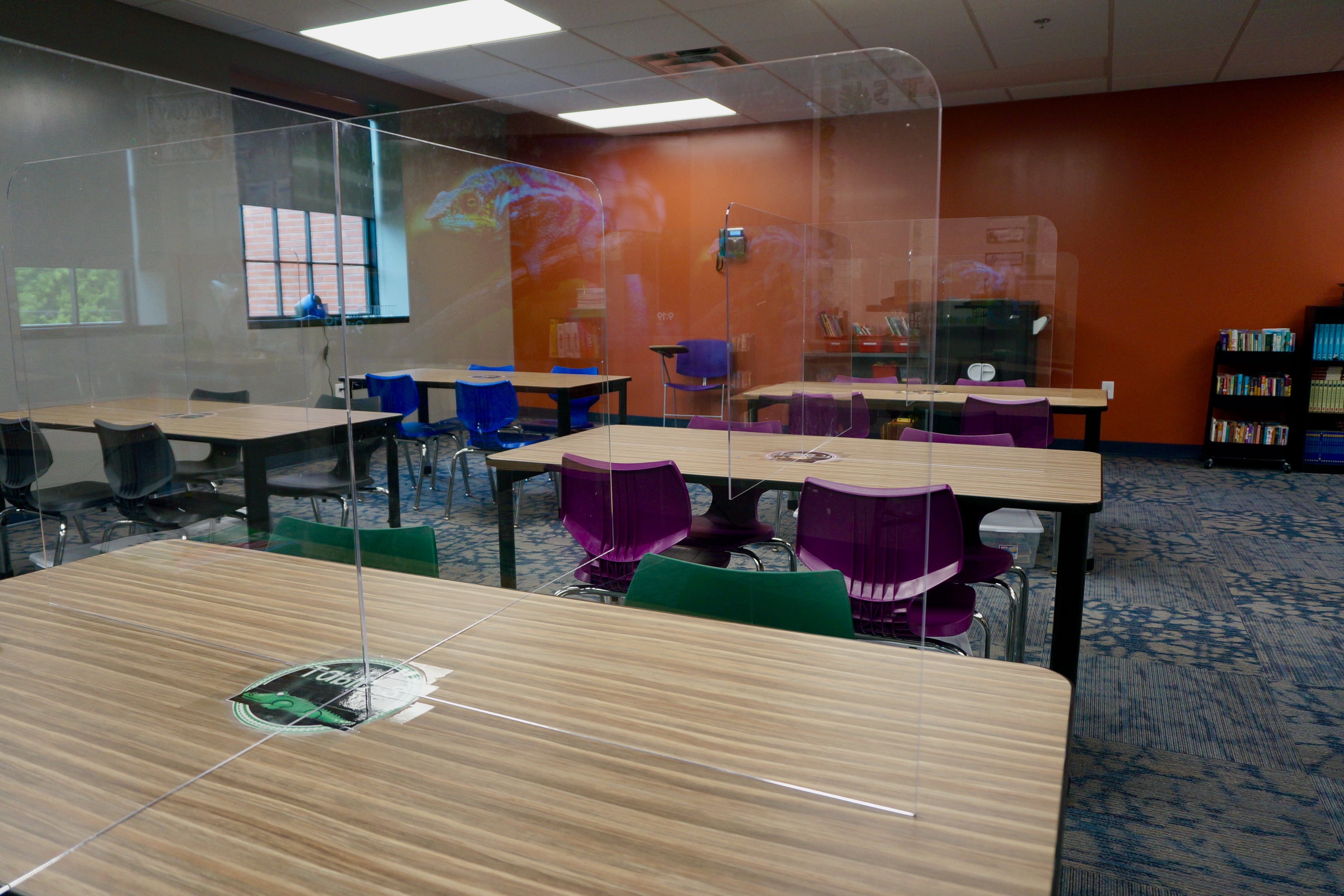Six weeks after Washington Township became the first Indianapolis school district to decide to reopen entirely online, the board approved a coronavirus threshold for when students will be able to return to classrooms.
The district, which enrolls about 11,000 students, will begin reopening schools when the average positivity rate — the percentage of people who test positive the coronavirus — reaches 5% in Marion County for two weeks. Elementary schools would return full time. Middle and high school students would remain indefinitely on a hybrid schedule where they attend in person some days and virtually on other days.
In a sign of how widely coronavirus plans vary, the metric is significantly more conservative than guidance from the local health department and than the approaches taken by several neighboring school districts, which have already returned to classrooms. But Indianapolis Public Schools, which began the year entirely remotely, is also pegging its reopening to a 5% positivity rate.
The positivity rate in Marion County is currently 6.9%, according to the Marion County Public Health Department. County guidelines allow partial school reopenings if the rate is below 13%.
The board discussed the plan for more than two hours Wednesday and voted after weeks of deliberation on the best way to approach reopening. Board members split on using 5% positivity as the measure for reopening classrooms. Only three of the five board members voted for the plan. One member abstained.
“I think the percentages are too conservative,” said board member John Fencl, who voted against the plan and argued that the costs of keeping students out of school were too high.
For students in early grades, remote learning and spending time on Zoom is especially difficult, Fencl said. And even older students are struggling socially and emotionally.
“There is a need to get back in school,” he said.
Anxiety over the potential health risks of reopening too soon, however, led other board members to support the conservative approach.
“Obviously I want our kids to be back in school too. None of this is lost on me or any of us,” board member Donald Kite said. But he ultimately supported a strict standard for reopening to help protect students, teachers, staff, and parents.
“I’d rather somebody call me and folks who support this a nervous Nelly than to be cavalier when it comes to health.”
If school buildings reopen under the plan, students will gradually return, giving schools time to ramp up. Kindergartners and first graders will come back first, with later grades joining over the next two weeks.
The Washington Township school district made news in July when the board voted to reopen schools entirely virtually because coronavirus cases were rising. In the weeks that followed, several Indiana schools and districts also shifted to entirely virtual plans.
One reason why school districts have pursued such different reopening plans is because state and county officials have taken a relatively hands-off approach. The Marion County Public Health Department did not release clear metrics for when and how schools should reopen until July 30, after several school districts had already called off in-person instruction.
The state released school reopening guidance on Wednesday, weeks after many students returned to classrooms.






